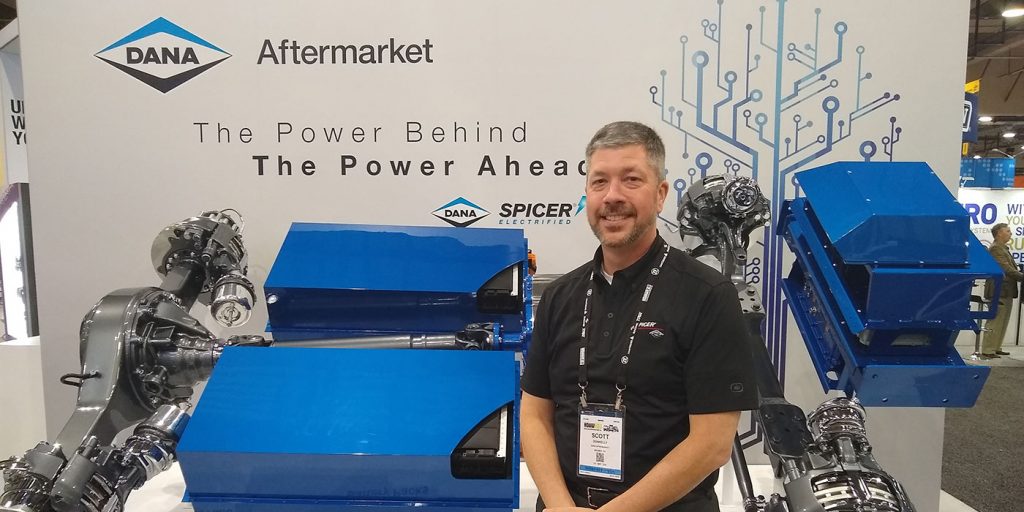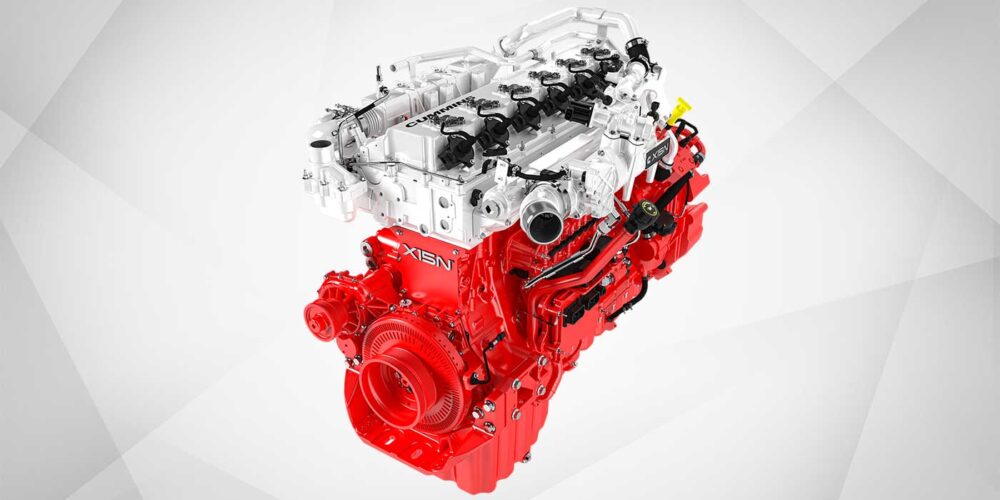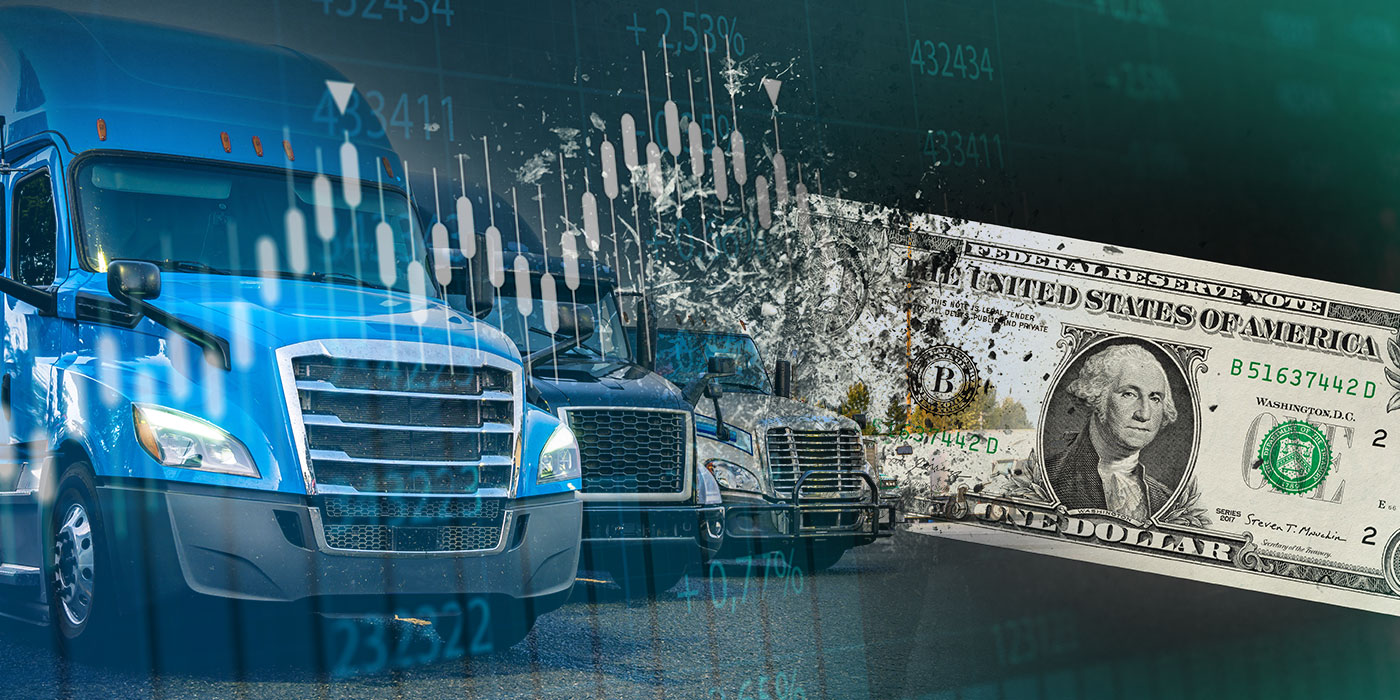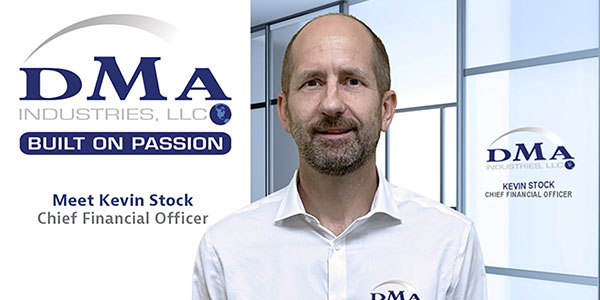Truck electrification conversations coursed through Heavy Duty Aftermarket Week. Some suppliers saw a threat to their business due to electric trucks’ reduced service expectations, while others saw opportunities—a new frontier of solutions and partnership possibilities. Dana Aftermarket’s booth was host to an inspiring sight—a full electric truck drivetrain, from the new electric drive controller and the electric motor to the Dana Spicer S172 single drive axle that’s already working productivity on diesel trucks today.
I caught up with Scott Donnelly, training manager and quality engineer, global aftermarket, Dana, to walk me through the electric powertrain and Dana’s combined OEM and aftermarket approach to electrification within the heavy-duty market.
FE: Hey Scott, thanks for taking the time—walk me through the powertrain, what am I looking at here?
Donnelly: Sure. Upfront, the controller, or the cradle as we call it, has all of the control modules. It has your charge controller, it has your power output controllers, and we will even employ electric power steering. All of the functions of the vehicle on this architecture are electric, and so they have to be controlled from somewhere. That’s what the cradle does for us. It allows everything to be held in one place. It replaces the engine. We still use a radiator because the electrical system requires cooling.
The Dana Compact Series Plus driveshaft and the Sumo TM4 motor are what drives everything. Then you have the standard Dana Spicer S172 axle. So if this vehicle goes into a shop, it is every bit of what they’ve come to expect in a Dana axle for the past 10 or 15 years.
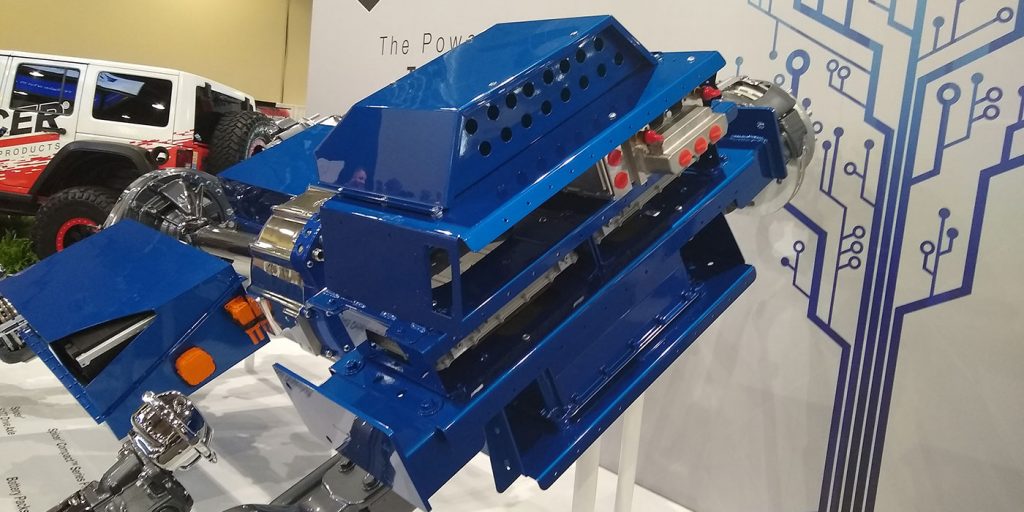
FE: Did you have to modify any of the components? Electric motors can put out a lot of torque—did you have to beef up the driveshaft? What about the axle design and integration?
Donnelly: Nothing has changed in the design or the manufacture of the axle to be able to handle this power. The real difference is the fact that this motor can produce all of its torque right away, but the Dana Compact Series Plus driveshaft doesn’t care how much torque this is putting out. It can handle it—it’s rated for it. It’ll live all day long in this environment with no drawbacks.
FE: How do you manage the electric motor torque?
Donnelly: It’s a direct drive system. With our control logarithms, we can control how much torque is available coming from the motor. For example, we can control that the motor so that driver comes off of the line with a little less power. If you’ve ever driven an electric car, when you hit that accelerator, it accelerates like a rocket. We don’t necessarily want a truck to perform like that when it’s fully loaded because you’re going to have detrimental draw on your batteries.
FE: It’s definitely a different experience. You don’t even feel the weight you’re pulling thanks to all the electric motor torque.
Donnelly: There’s a learning curve to driving a battery electric vehicle. Another difference–when you let off the accelerator it automatically starts to go into regenerative mode; the motor turns into a brake. Many people have been surprised by how much deceleration occurs when you let off the accelerator. It’s not like a diesel engine where you coast when you take your foot off the accelerator. On electric architecture, when you let off that pedal, it starts slowing down right away.
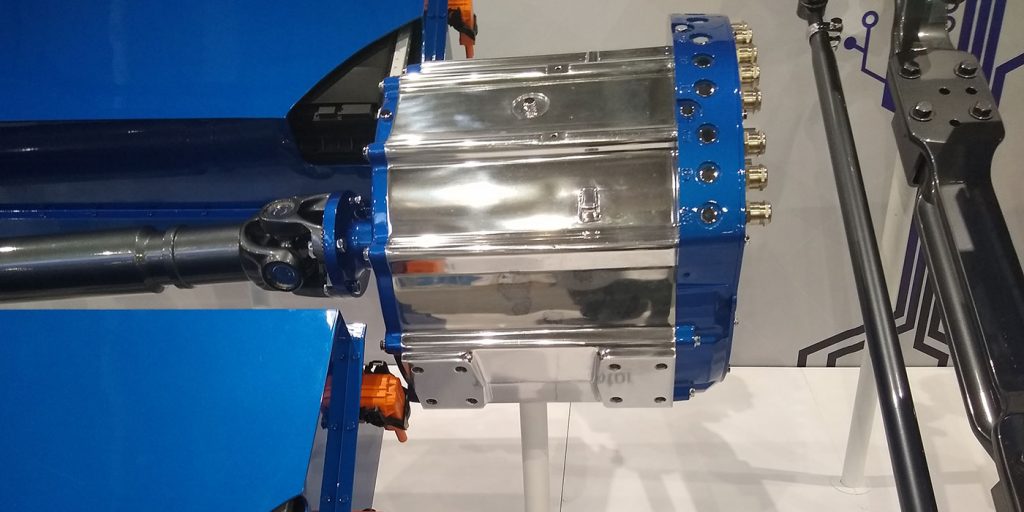
FE: How much influence do you foresee fleet customers having in setting controller parameters?
Donnelly: What we do before we build a system is that we sit down with the customer and we find out what they’re going to use the truck for. We ask: How far do you need to go? How many stops do you need to make? Typical Speeds? Weights?
Then we develop a system around that information. That allows us to take what we already know, put it together, and make the best solution.
FE: What applications would this configuration tackle?
Donnelly: This is for 200-mile range applications. So city pick-up and delivery there are a lot of starts and stops. This electric driveline would eliminate idling. The electric truck would pull up, the driver would turn the system off to park the vehicle and hop out to make the delivery. Then he’d come back to the truck, energize and drive down the street to the next stop—very efficient. At the end of the day, the driver would take it back to the shop, plug it in, and it’s ready for the next day.
FE: So is this an OEM or aftermarket, retrofit solution?
Donnelly: At this point, we’re building from the OEM standpoint. But the way the whole thing works is that Dana will be supplying this driveline–from axle to cradle–and all made by Dana except for the batteries. We’re currently supplying this to Peterbilt and Kenworth.
FE: Is that an exclusive partnership or are you working with open the working with all the OEMs?
Donnelly: I would hope that that partnership has spurned some other people’s interests but I don’t know for sure what else we’ve been working on.
FE: Here at HDAW about the impact of electrification on the supplier base. How do you see truck electrification impacting the heavy-duty aftermarket?
Donnelly: The impact for us will be servicing those components that are related to the electric powertrain. When it comes to servicing this axle, an axle shop can do that all day, every day. Driveshaft, it’s the same thing. Where it’s going to get specialized within the electric motor and the Nordressa cradle that we have.
Those components are set up so that if you have a service need, it can be removed individually. You don’t have to take the whole cradle out–you can plug and play individual components. What that means for us is we have to determine what level of serviceability we’re going to allow in the field and then what level we want to maintain for our proprietary technology.
FE: And then there are the safety requirements and training that will be needed.
Donnelly: Yes. You bring in a diesel truck into a shop, shut it down, chock the wheels and start working on it. With a battery electric vehicle, you have many more things to consider because you’ve got an energized system and you have to de-energize it. You have to have special safety equipment, and you have to have special tools.
Once you’ve gone through the steps to de-energize it, then you have to verify with a multimeter that you truly have a zero-voltage system so that nobody gets hurt. That’s going to be the big change for the industry. Our engineers and our developers are already working on that so we’re working in lockstep formation on our OEM and our aftermarket side as these products come to market.
FE: So what’s next in rolling this out to the market?
Donnelly: At Dana, we want to be on every truck. We want to be the electric drive train of the future and we’re going to get there. No one else has this package. They can put other pieces together but they are not the builder and maker of all those pieces and parts of the puzzle. I believe there’s been about $300 million invested by Dana in the development of electrification so far, and I don’t see it slowing down anytime soon.

